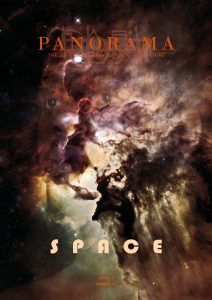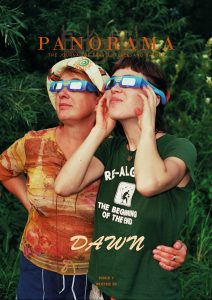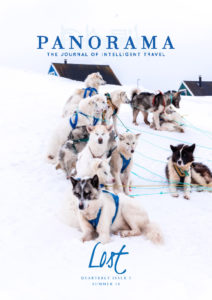In this piece, I connect to the idea of space through an awareness of shared landscapes and deep time, and through an immersion in place. In search of a new perspective, a space to think and breathe, I begin exploring a local nature reserve, an abandoned quarry, just at the edge of roads and houses. I am surprised to leave behind the constant hum of traffic and my sense of claustrophobia, and find a feeling of expansion. I find a space of light, of contrasts and changes, through the exposed landscape of the chalk pits. I find a hidden valley, a place that feels secret and concealed, and creates a sense of other worlds inhabited by the more-than-human. In this space, I begin to note the layers of history within the landscape, and a movement that is palpable, suggesting a discontinuity, unsettled and ever-changing.
Through the entrance of the chalk pits, space seems to expand, and the sky opens wider as I approach. The quarry forms a crater, opening out to the edges in a bowl shape, and framed by cliffs of white chalk. Paths and stairs are laid out to mark a route. Stones and boulders are scattered around, white rock fragmented across a moon surface where life has started to creep through.
The chalk pits are the site of a former quarry, designated as a nature reserve, and a place of geological and historical significance. Located by a junction on the outskirts of the village of Cherry Hinton in south Cambridge, at the edges of suburban streets and houses, reaching out towards fields and farmland; to the low chalk hillsides that are a feature of the area.
At the edge of the Gog Magog Hills is the site of a giant’s grave from a time when the legendary giants of Albion roamed. The rarity of elevation in these parts makes them an event, a place where things happen. From the Gog Magog hilltop, on a clear day, the landscape lies written in lines. The tracks and the footprints of what went before; a network of movement connecting lands and leaving only traces: fossils, bones, fragments.
This is the East Pit, the most recent part of the quarry. Here the sense of absence is palpable. There is something otherworldly, or a rare glimpse into this world in all its manifestations. There is no visible sign of the iron age fort that was built on the hillside, of figures vanishing over the horizon.
Standing in the middle of this space, away from the hum of traffic and distant life continuing, there is room to stretch out, for the pressure that has built over time to subside. When I feel the need for a new perspective, a sense of space or a form of travel. When it feels as though the walls close around me. The limitations cloud my head. When the land that excludes, or forbids entry, to many a stranger; threatens also to trap me within an island territory.
It is a place I have started to visit frequently and gradually I notice how it creeps into my thinking. There is something unexpected here that belies the surroundings, so that each visit, each entrance feels like a surprise. The sky opening outwards to where birds swoop and soar.
*****
I walk across to the other side, to a densely wooded area known as The Spinney. This part of the quarry was abandoned over two hundred years ago, and it still has a displaced feel to it, in-between and semi-wild, while all around has altered beyond recognition. Time folds back on itself in a tangle of paths. The spine of the land runs through to the bones of the chalk.
The land here feels unsettled and disturbed, in the process of being restored, reclaimed, and recovered. There are mounds of earth, and the uneven ground feels displaced, as though it is in transition.
I follow a trail that leads into undergrowth, a network of paths through woodland scrub and grassland. Here are thickets of brambles and hedgerows, trees draped in ivy, a tangle of textures and hidden pathways. The paths are intricately woven with the marks of footprints and connecting tree roots just below the surface; twists and turns with no design, over mounds of earth and hidden burrows. Birds circle the tops of trees, the sky fading blue. The rustling of small creatures in the woodland. A heart shape among the trees where ivy meets, connecting across the branches.
The longer I stay here the more I begin to feel the spirit of the place, seeing it from new angles, each turn and hidden nook. There is a density to the woodland that feels abandoned and overgrown, entwined with thickets and discarded piles of branches, so that turning the corner to see other people is a surprise. There is a sprawling underground quality to it, something concealed. This must be why the teenagers like it. It creates a sense of trespass. I am amazed to experience this feeling of escape in such a small pocket of land; somehow the roads and the houses seem far away. A secret and abandoned place, a valley sealed off and forgotten.
I begin to get lost in the faraway feel of this place and scramble up steep tracks, climbing over tree roots, and through brambles, unexpected twists and turns. The brittle tangle of branches around tree trunks in a snake-like grip. Looking upwards, past dense woodland and tall trees, imagining a jungle.
Turning a corner, I see a fallen tree left uprooted on the path ahead. It is tangled over with other branches so that it looks otherworldly, as if seized by tentacles and creepers. There is something unsettling about this, almost like a snake devouring its prey. A force suppressed and waiting to take over. In the process of being transformed into something else, coiled together as if to form another species.
*****
Crossing back to the other part of the quarry, I walk around. Beneath my feet the ground is soft and chalky, bone dry, and dusty. It is the whiteness of the exposed chalk that creates a sense of other worlds. When it rains the paths are altered again, and the ground becomes saturated and uncertain. In the puddles of water that form, the chalk oozes, grainy white and blue dissolving grey.
Where the floor of the pit was, the earth has begun to be colonized by wildflowers and plants. Since my first visit, I have started to note the seasonal changes, remembering how in summer flowers begin to roam across and to conceal the rocky ground in places. Moss covers the surface and the red and yellow of scattered shrubs catch the light, their branches patterned by lichen. On this side of the chalk pits, away from the tangles of roots and branches, things feel more restrained and held back.
In this cavernous setting, I am thinking about how long it takes the land to recover. The empty space lies open and exposed revealing what is no longer there. To quarry means to excavate, to pull out materials from the earth, to build and expand, to carve and create, to fundamentally alter the landscape. There is a sense that the story is still ongoing, that there is a before and an afterwards.
The cliffs have become places for new life. Along the top are scrubland trees and growing down the sides are bushes, beginning to spread and grow in pockets along its surface. The rock face has nests for birds and burrows, and in the late afternoon light rabbits begin to appear, living their lives on the slopes of the chalk pits.
Everywhere I look there are scattered pieces of rock. I pick up a fragment of chalk to examine it. The chalk is rough and solid but also soft, always crumbling and breaking away. It leaves a residue on my fingers, and I begin to draw across my hands little marks that are easily erased. I think about drawing the landscape in lines on its rough, dry surface, shading into the texture of the chalk.
I start to notice that just as the twigs on the ground are saturated with the white of the chalk and lie bone-like on its surface awaiting discovery; so, the rocks change too, as if to take on the complexion of the surrounding earth and moss. I am intrigued by how the colours shift with the light of the sky and the land.
In the sides of the cliff are layers of colours revealing the shaping of the landscape, and how the earth has moved and formed. The chalk is pink, yellow, and green, slow changes mapped in layers of embedded time. The evolution of the landscape displayed in lines of text to read. Each formation in the rock reveals a different world, a sense of deep time, ever-evolving. A story that emerges in places if you are looking. Drawn across, peeling back time and space to reveal the bones of the land laid bare.
The land has formed in great waves, disappearing under the rising water of oceans, concealing the hills and the valleys. Settling slowly as sediment, the skeletons of long-dead sea creatures deposited in layers over many millions of years. Land masses moving and meeting other lands. The emergence of hills from the sea. The melting of vast ice sheets to form valleys, marked out by rivers. The slow drift of time, of worlds.
The chalk is about what connects, it is soft and changeable, malleable; it adapts. It is the nature of the chalk to absorb, to crumble, to move. The chalk pits tell a story of ancient time and of the intersection of living creatures with the land, existing far longer than human life. The shifting of landscapes, of movement across time.
Here in the chalk pits my claustrophobia dissolves into moon rock. The chalk cliffs of England that resemble barriers forbidding entry, pushing out the stranger, the invader, come to seem like symbols to link landscapes together. Away from boundaries and borders, the chalk rock connects, the sea is part of a greater ocean.
*****
The day which has been overcast is broken through by late afternoon sun. Through cloud it reaches out its gentle rays to shine upon the white of the chalk, to reflect upon it and start to bring out the colours of the whole landscape. Now the chalk pit is transformed into a basin of light. The chalk takes on a yellow and ethereal layer and the whole place is lit up gently; colours contrast, meld together to something magical. There is an enchanted light across the space and along the ground; the moss and chalk together take on a new aspect.
I sit at the edge of the chalk pits and watch the changing light. At ground level, the earth feels busy, ants scurry and insects buzz around me in a constant hum, along with the chittering of birds. I listen to how the world keeps moving. This hollowed-out earth is starting to be claimed back by non-human life. On the ground, I move closer, I merge into this space, for just a few moments. I am thinking about movement and mutability. Of the slow shifting of deep rock, and the softened perspective of time.
The ideas form slowly, one glimpse at a time. I become attuned to the contrasts. I am entranced by the light and the colours of the landscape. Although it speaks of what is absent, it is never still, always changing. The changes are slow, immeasurably slow and yet the scene around me alters with every hour, every moment, every fall of the light.
A place prone to shadows and reflections and shifting colours. As changeable as the sun moving behind cloud. The sky takes on a twilight blue in contrast to the deepening white of the chalk cliffs. As clouds close over crepuscular rays, containing them within forms of solid-grey, and changing the colour of the earth once again: the rocks, the open sky.











